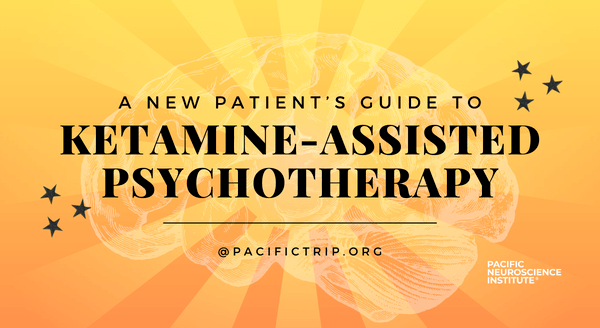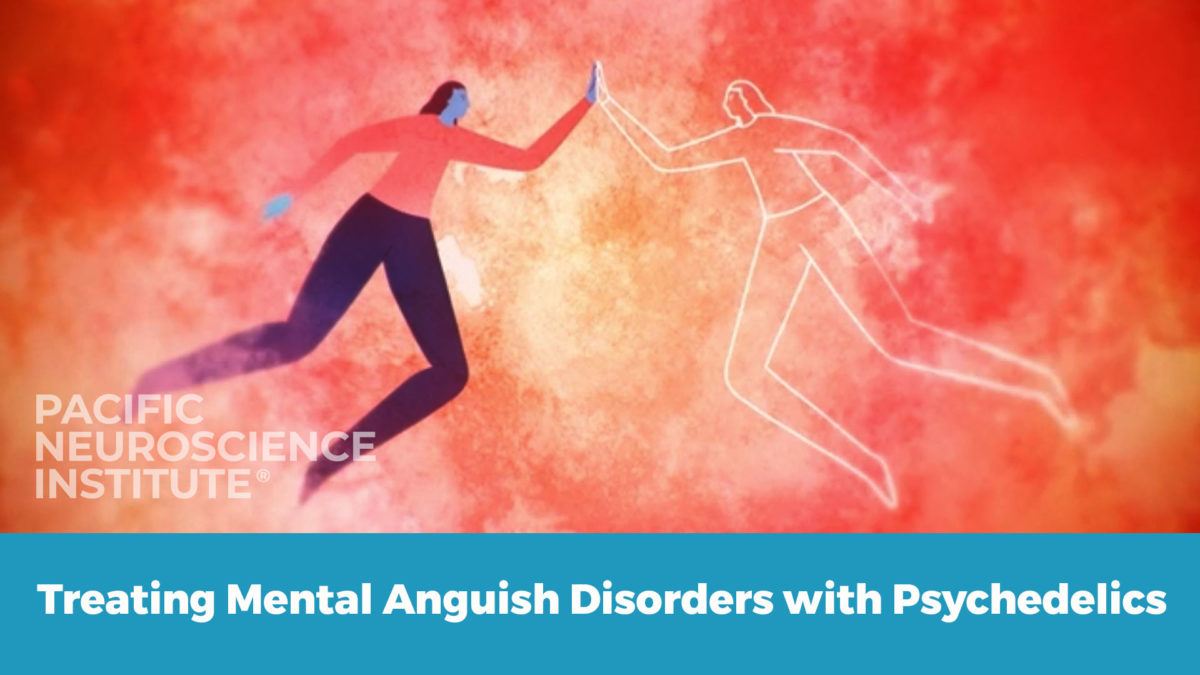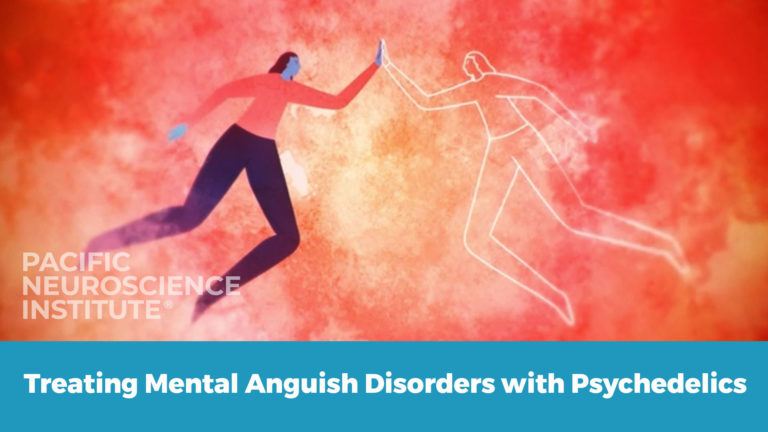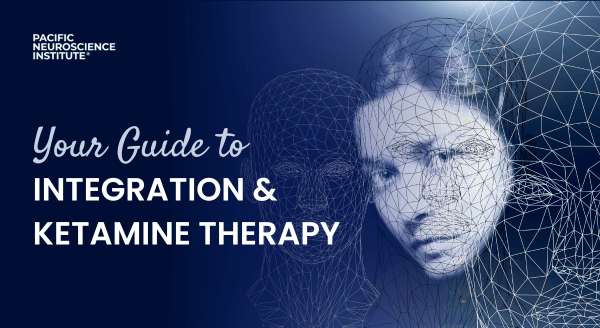

A New Patient’s Guide to Ketamine-Assisted Psychotherapy
by Zara Jethani
In recent years, ketamine-assisted psychotherapy (KAP) has emerged as a promising treatment for various mental health conditions, offering new hope to individuals who have not found relief through conventional therapies. This innovative approach combines the therapeutic effects of ketamine, a dissociative anesthetic, with psychotherapy to address a range of psychiatric disorders, including depression, anxiety, PTSD, and addiction. For those considering this treatment option, understanding what ketamine-assisted psychotherapy entails and what to expect is an important step.
At the Treatment & Research In Psychedelics (TRIP) Center at Pacific Neuroscience Institute®, our team of experts provides a holistic approach to KAP for a wide range of mental health conditions. Here, we present a comprehensive guide for new patients navigating this transformative therapy.
Understanding Ketamine-Assisted Psychotherapy
What is Ketamine?
Ketamine is a medication primarily used for anesthesia and pain management. In recent years, researchers have discovered its potential as a rapid-acting antidepressant and anxiolytic agent. Ketamine works by modulating the activity of certain neurotransmitter systems in the brain, such as glutamate and serotonin, leading to profound changes in mood and perception.
How Does Ketamine-Assisted Psychotherapy Work?
Ketamine-assisted psychotherapy involves the administration of a carefully controlled, low dose of ketamine in conjunction with psychotherapeutic support. Unlike traditional antidepressants, which may take weeks to months to produce noticeable effects, ketamine often induces rapid and robust improvements in mood and cognition. The psychotherapeutic component helps patients integrate and make sense of their ketamine experiences, facilitating long-term healing and personal growth. In our practice at TRIP, patients experience the most benefit from a series of six dosing sessions over a 6-week period.
What to Expect During Treatment
- Initial Evaluation:
Before beginning ketamine-assisted psychotherapy, patients undergo a comprehensive evaluation to assess their mental health history, current symptoms, and treatment goals. This evaluation helps determine whether ketamine therapy is a suitable option and allows the healthcare provider to tailor the treatment plan to the individual’s needs.
- Preparation Session:
Preparation for ketamine-assisted psychotherapy involves several key components aimed at ensuring the safety and efficacy of the treatment, as well as preparing the patient mentally and emotionally for the experience.
- Treatment Sessions:
During a ketamine-assisted psychotherapy session, patients receive a dose of ketamine via intravenous infusion, intramuscular injection, or nasal spray, depending on the provider’s protocol. At TRIP, we administer ketamine through an IM injection or lozenge depending on patient tolerability. The session typically lasts around 60-90 minutes, during which patients may experience altered states of consciousness, such as dissociation or hallucinations. Throughout the session, a trained therapist provides guidance and support, helping patients navigate their inner experiences and process emotions.
- Integration and Follow-Up:
After each treatment session, patients participate in integration sessions with their therapist to reflect on their ketamine experiences, explore insights gained during the session, and develop coping strategies for managing symptoms outside of therapy. Regular follow-up appointments allow healthcare providers to monitor progress, adjust treatment as needed, and provide ongoing support.
Potential Benefits and Risks
- Benefits:
- Rapid relief from symptoms of depression, anxiety, PTSD, and other mental health conditions.
- Improved mood, cognition, and overall well-being.
- Enhanced self-awareness and personal growth.
- Potential to break free from treatment-resistant symptoms.
- Risks:
- Temporary side effects during ketamine administration, such as dissociation, nausea, and dizziness.
- Potential for misuse or dependence, although the risk is lower in the context of supervised medical treatment.
- Limited long-term data on the safety and efficacy of ketamine-assisted psychotherapy, necessitating ongoing research and careful monitoring.
Is Ketamine-Assisted Psychotherapy Right for You?
Ketamine-assisted psychotherapy can be a life-changing treatment option for individuals struggling with severe or treatment-resistant mental health conditions. However, it is essential to weigh the potential benefits against the risks and consider whether this approach aligns with your treatment preferences and goals. Before starting ketamine therapy, discuss your options with a qualified healthcare provider who can provide personalized guidance based on your unique needs and circumstances. Currently, psychotherapy sessions can be covered by insurance while the dosing sessions are an out-of-pocket expense.
In conclusion, ketamine-assisted psychotherapy offers new hope for individuals seeking relief from debilitating mental health symptoms. By combining the therapeutic benefits of ketamine with psychotherapeutic support, this innovative approach holds promise for transforming lives and promoting healing. If you’re considering ketamine therapy, take the time to educate yourself, ask questions, and explore whether it may be the right path forward on your journey to recovery.
For more information about ketamine-assisted therapy, contact us at 310-582-7612 or schedule a consultation.
KAP Specialty Team at TRIP
Useful Links
Related Articles
Related Videos
 Navigating New Frontiers: Exploring Psychedelic-Assisted Therapy at TRIP
In the complex landscape of mental health, a revolution is underway: psychedelic-assisted therapy. At the forefront of this movement is the TRIP Center at Pacific Neuroscience Institute. The Treatment &…
Navigating New Frontiers: Exploring Psychedelic-Assisted Therapy at TRIP
In the complex landscape of mental health, a revolution is underway: psychedelic-assisted therapy. At the forefront of this movement is the TRIP Center at Pacific Neuroscience Institute. The Treatment &…
 Psychedelic-Assisted Therapy with Ketamine at PNI
Using ketamine in a psychedelic-assisted approach, we treat people 16 years and older who are treatment-resistant or who wish to effectively tackle deep-rooted, unresolved trauma that has not been adequately…
Psychedelic-Assisted Therapy with Ketamine at PNI
Using ketamine in a psychedelic-assisted approach, we treat people 16 years and older who are treatment-resistant or who wish to effectively tackle deep-rooted, unresolved trauma that has not been adequately…
 Treatment & Research In Psychedelics (TRIP) at Pacific Neuroscience Institute | Explainer
At PNI’s Treatment & Research In Psychedelics (TRIP) Program, we conduct clinical trails at the forefront of innovative and transformative medicine. TRIP, spearheaded by Daniel Kelly, MD and Keith Heinzerling,…
Treatment & Research In Psychedelics (TRIP) at Pacific Neuroscience Institute | Explainer
At PNI’s Treatment & Research In Psychedelics (TRIP) Program, we conduct clinical trails at the forefront of innovative and transformative medicine. TRIP, spearheaded by Daniel Kelly, MD and Keith Heinzerling,…

Navigating New Frontiers: Exploring Psychedelic-Assisted Therapy at TRIP

Psychedelic-Assisted Therapy with Ketamine at PNI

Treatment & Research In Psychedelics (TRIP) at Pacific Neuroscience Institute | Explainer
About the Author

Zara Jethani
Zara is the marketing director at Pacific Neuroscience Institute. Her background is in molecular genetics research and healthcare marketing. In addition, she is a graphic designer with more than 20 years experience in the healthcare, education and entertainment industries.
Last updated: July 2nd, 2024






